Text
Why bringing the outdoors inside is not a substitute for outdoor play.
Play is a part of children’s natural development (Dietze & Kashin, 2018). Children learn through hands on play experiences. Early childhood education has started to reflect this through the implementation of play-based early learning, planned and free play activities and experiences. Unfortunately, the same is not true for outdoor nature-based learning. Throughout my experience as an ECE, I have worked with a range of different age groups, from infants to primary school. Too often the weather was deemed “too cold” or whenever there was a little bit of rain, children would be restricted to playing inside and not allowed to experience play in different types of weather conditions. On these days, children’s outdoor play opportunities were limited to experiencing different weather through looking out the window. Watching the rain instead of playing in it because it’s wet or being kept out of the snow because its too cold, is not allowing children to experience nature and the natural world as they should. When children are given the opportunities to play in different types of weather, they build a resilience to these different conditions. Adults need to provide children with the opportunities and environments to naturally explore and learn through hands on experiences.

(Kable, 2010).
Philosopher and theorist, Rousseau, stated that children are good, and they are curious and competent learners. Rousseau stressed the importance of allowing children to take their learning in their own direction through natural exploration and hands on learning. He also stated that children need to be provided with opportunities and time to run around and play freely, i.e. to repeatedly fall so that they will develop resilience.
Children miss out on too many different learning experiences and opportunities that the indoors does not offer. Furthermore, studies show that exposure to fresh air, sunlight, and nature, improves both mental and physical health (Conversational Receptionists, 2018). Sunlight helps your body produce natural vitamin D and helps to fight infections (Conversational Receptionists, 2018). Exposure to fresh air and sunlight also boosts people’s moods by releasing the “happy hormone” called serotonin (Conversational Receptionists, 2018).
Additionally, children are developing, strengthening, and mastering a wide range of developmental domains through outdoor, nature-based early learning. Children’s play and learning opportunities should not be limited to the indoors when there are so many opportunities and adventures just waiting to be explored and experienced by children as close as their own backyard.
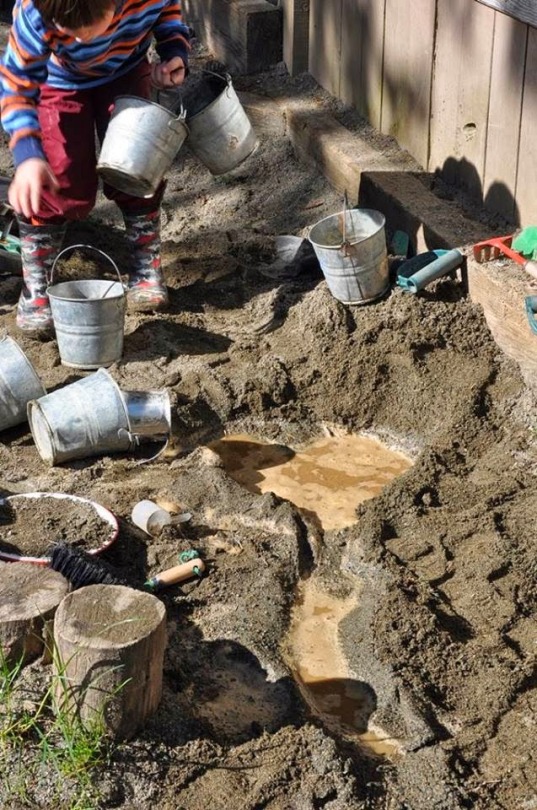
(Kable, 2010).
Check out this website that features a picture infographic about why science suggests that people need to spend time outdoors along with some statistics: https://www.kent-teach.com/Blog/post/2016/10/22/why-science-says-you-must-spend-time-outdoors.aspx?fbclid=IwAR2LOVPRvcwmF2O92twwgfo4cz0cMRFO8b3vMGCt8Bosvk_HLQNHISG1rfU
References
Conversational Receptionists. (2018). 4 Benefits You Get from Sunlight and Fresh Air. Retrieved from Conversational Receptionists: https://www.conversational.com/4-benefits-get-from-sunlight-fresh-air/?fbclid=IwAR2LOVPRvcwmF2O92twwgfo4cz0cMRFO8b3vMGCt8Bosvk_HLQNHISG1rfU
Dietze, B., & Kashin, D. (2018). Outdoor and nature play in early childhood education. North-York: Pearson Canada Inc.
Kable, J. (2010, April 13). How to Create a Natural Outdoor Play Space. Part 1. Retrieved from Let the children play: http://www.letthechildrenplay.net/2010/04/8-tips-for-creating-inspiring-outdoor.html
1 note
·
View note
Text
Outdoor Play. The power of descriptive words!
Words are powerful (Schafer, 2010). They can paint a picture and call on emotions. One word can mean the difference between feeling fearful or competent (Schafer, 2010). In research, for example, the difference between calling the research sample population, subjects or participants is that calling them subjects implies that they may not be aware that they are being studied or examined. Whereas, the word participants imply that the people being studied participated, willingly and informed. The same is true between the words interview and interrogation. Interview sounds friendly, the researchers want to know more about the participant, their views, their ideas, concerns etc. concerning a certain topic (Schafer, 2010). Whereas, the word interrogation suggests negativity, confrontation and trouble and can invoke feelings of fear (Schafer, 2010). Additionally, the word interrogation has been associated with the way in which police officer’s interview persons of interest involving a case.

(Jessie, 2016).
When it comes to the terms used when talking about outdoor risky play, this principle is no different.

(Motivation Monday, n.d.).
Let’s examine some of the words associated with outdoor play such as risky, adventurous and challenging vs dangerous, and scary.
When people hear the word dangerous, their minds automatically thinks this is not good, there is more than just a potential to get hurt when something is dangerous. With the word risky however, this more implies proceed with caution, make appropriate adjustments as needed for example walk a bit slower, hold on to railings, carefully watch your balance etc. Risky suggests, you can do this if you make the needed adjustments to do it. For example, if an adult who has already developed their risk assessing and management skills decided to go rock climbing, they would go with all the appropriate equipment needed to ensure their safety. Similarly, someone who wants to attempt skiing for the first time, they have the option to take one of the “easy trails”, one of the “medium trails”, one of the “harder trails” or the most challenging trail. As someone who has a pretty good awareness of their capabilities, I personally would choose the easy trail for the first time. That’s the easy choice, due to the lack of experience, to play it safe, I would take the easier route and work my way up through the difficulties, as I felt comfortable to do so. On the other hand, if you were someone who goes skiing every year, but this is the first time you visited this trail you see the word dangerous to describe the trail instead of expert level or challenging. What would this make you think about? Would you think that this “dangerous” trail is called dangerous because you shouldn’t be on it, or because there are more obstacles and challenges and therefore to safely reach the bottom you should be an experienced and skilled skier?

(Quotes about No entry, n.d.).
When adults describe play as adventurous, risky and or challenging instead of dangerous or scary, they are encouraging children to challenge themselves and to take healthy risks that come naturally to them. Using these words encourage children to develop, practice and master their own risk-taking assessing and managing skills. They are allowing children to take their learning in their own direction as they feel capable and competent to do so.
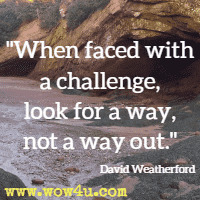
(Inspirational Words of Wisdom, n.d.).

(Inspirational Words of Wisdom, n.d.).
References
Inspirational Words of Wisdom. (n.d.). Retrieved from Wow 4 U: https://www.wow4u.com/challenges/
Jessie. (2016, May 25). Interview vs. Interrogation. Retrieved from Governance, Fraud & Investigation: http://jessredfern.blogspot.com/2016/05/interview-vs-interrogation.html
Motivation Monday. (n.d.). Retrieved from Fit Fab Cities: https://fitfabcities.wordpress.com/2012/03/12/motivation-monday-11/
Quotes about No entry. (n.d.). Retrieved from Quote Master: http://www.quotemaster.org/no+entry
Schafer, J. (2010, November 2). Words Have Power. Choose them wisely. Retrieved from Psychology Today: https://www.psychologytoday.com/us/blog/let-their-words-do-the-talking/201011/words-have-power
0 notes
Text
Why is it important for children to develop a love and respect for nature and the natural world?
The ever-growing endangered species list is a sign that the planet is in need of some kind of help. World Wildlife Foundation’s list of endangered and extinct species is vast. Have you seen a northern white rhinoceros? If you said yes, then you are lucky, your children will not have the chance to share the earth with that beautiful creature. In March of 2018, LiveScience reported that the last living male northern white rhinoceros was sick (Pappas, 2018). If that wasn’t bad enough The Guardian News reported in September of 2014, that over the last 40 years, the earth has lost an astounding half of its wildlife population (Carrington, 2014). From 1970 to 2014 the number of living land animals has decreased by a whopping 40% (Carrington, 2014). Furthermore, this loss is due to deforestation, over hunting, pollution and climate change (Carrington, 2014).
This is not the type of example that adults should be setting for children if we want them to grow up to love and respect the planet. A person’s ecological identity is developed through the connections and attitudes that people form towards the natural world (Dietze & Kashin, 2018). This is not the type of ecological identity that children should be identifying with. One person who is setting the right kind of example for children by taking a step towards reducing and ridding the planet of the pollution in the waters is Jonathan Rossiter. This man has invented a water robot that cleans or “eats pollution” all while generating the electricity needed to keep it running at the same time. This robot is powered on pollution and thus will continue cleaning the pollution out of the water until there is nothing left to clean.
Children learn by example and adults that advocate for nature-based early learning need to be modeling a love and respect for the natural world around them. Helping reduce pollution, recycling, getting children involved with the community and allowing children to explore and investigate the natural world and wildlife around them, will help children to develop an ecological identity where they love, appreciate and respect nature and the wildlife in it.

(Pappas, 2018).
Take a look at the current endangered species list here on the World Wildlife Foundation website https://www.worldwildlife.org/species/directory?direction=desc&sort=extinction_status

(Carrington, 2014).
Check out Jonathan Rossiter’s Ted talk about his invention here https://www.ted.com/talks/jonathan_rossiter_a_robot_that_eats_pollution?language=en#t-575121
References
Carrington, D. (2014, September 30). Earth has lost half of its wildlife in the past 40 years, says WWF. Retrieved from The Guardian: https://www.theguardian.com/environment/2014/sep/29/earth-lost-50-wildlife-in-40-years-wwf
Dietze, B., & Kashin, D. (2018). Outdoor and nature play in early childhood education. North-York: Pearson Canada Inc.
Pappas, S. (2018, March 1). This Is the World's Last Male Northern White Rhino — and He's Sick. Retrieved from LiveScience: https://www.livescience.com/61900-last-male-northern-white-rhino-is-sick.html
Shengale, R. (2015, July 14). World's Top 10 endangered species. Retrieved from Visually: https://visual.ly/community/infographic/environment/worlds-top-10-endangered-species
0 notes
Text
Nature-Based Places and Spaces
Sense of Place and why is it important for children to have access to natural places and environments?

(Kable, 2013).
Children’s outdoor play spaces have changed considerably over the years. When I was growing up, there were more nature filled places than there are today. The human population is growing and as such, nature filled spaces are being cut down to make room to build new houses in the developing community. When I was a child, the house that I lived in had a large forest area practically right in my own backyard. The forest was right there, behind the fence to my family’s property. Sadly, by the time I had graduated secondary school, half of that beautiful forest was already cut down and destroyed. Today there are new houses behind my old family home. I remember when the construction workers first started to cut down the forest behind my home, it devastated me. Back then, I did not fully understand why this was so saddening for me. Then I realized that I had made an emotional connection to this place from all the times I spent playing there when I was growing up. I used to collect frogs and compare and sort them by their colours and sizes and then bring them back to let them go at the end of the day. Sometimes we would be lucky and find something more interesting and not as easily found like a salamander or newt. Once in a while, we would even see a fox in my very own backyard. My sister, neighbours and I would spend hours collecting things from there. The memories that I made with my sister and my neighbours by spending so much time exploring the forest were a very important part of my childhood and developmental growth. My own love of nature comes from the amount of time I have spent exploring the natural environments in which I’ve had the opportunities to explore. My love of animals comes from this same place. In fact, research suggests that humans actively seek out connections with nature, animals and other life, and this innate behaviour is known as Biophillia (Dietze & Kashin, 2018). Furthermore, “children’s outdoor play and learning requires connections to special places and spaces in nature. Natural places stimulate curiosity, exploration and discovery” (Dietze & Kashin, 2018, p. 158), and therefore, children need to be provided with the opportunities to interact with, explore and develop a sense of place in the natural world as it is an important contribution to children’s holistic development.

(Redmond, 2015).
What is a sense of place and how can educators or family members help children develop it?
A sense of place is a place, space or environment in which someone has visited often enough or where something special or memorable has happened there and an emotional connection has been made with this place (Dietze & Kashin, 2018). When children return to these places it brings up the emotions associated with them. Bringing children back to the same natural environments, allowing them to explore, play, run and collect natural loose parts or do things/activities that they would usually do inside, in this space outside, allows children to develop emotional connections to these places and in doing so, helping to develop their sense of place.
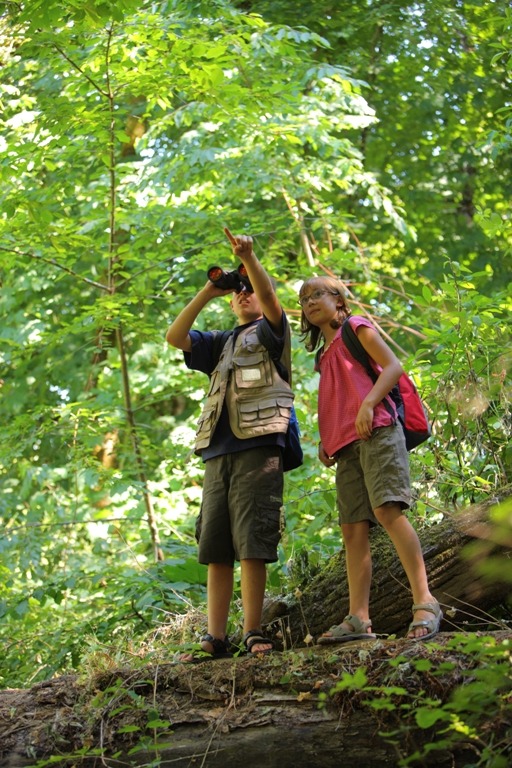
(Sustainable Forestry Initiative, 2017).
Check out this post created by Jenny Kable that features a series of pictures with a group of children making a connection to a place
http://www.letthechildrenplay.net/2013/02/connecting-children-and-nature.html?utm_source=feedburner&utm_medium=email&utm_campaign=Feed:+LetTheChildrenPlay+(let+the+children+play) (Kable, 2013).
Here are a few pictures that I took of some of the animals that visited my backyard.

This is a picture of a groundhog mother and her babies. She decided to dig and make her home under the shed in my family’s backyard.

Here is a rabbit jumping around and possibly looking for food in my family’s backyard.

This is a close up picture that I took of a beautiful butterfly in the Lilac tree in my family’s backyard.


...and finally, this is a picture of one of the many raccoons that stop by my family home to steal the cat’s food.

References
Dietze, B., & Kashin, D. (2018). Outdoor and nature play in early childhood education. North-York: Pearson Canada Inc.
Kable, J. (2013, February 4). Connecting children and nature. Retrieved from Let the children play: http://www.letthechildrenplay.net/2013/02/connecting-children-and-nature.html?utm_source=feedburner&utm_medium=email&utm_campaign=Feed:+LetTheChildrenPlay+(let+the+children+play)
Redmond, C. (2015, June 13). Picnics for kids: Good food in the great outdoors. Retrieved from Irish Times: https://www.irishtimes.com/life-and-style/food-and-drink/picnics-for-kids-good-food-in-the-great-outdoors-1.2247243
Sustainable Forestry Initiative. (2017). Connecting kids to nature. Retrieved from Project Learning Tree: https://www.plt.org/about-us/connecting-kids-to-nature/
0 notes
Text
Loose Parts What are they and why are they important?
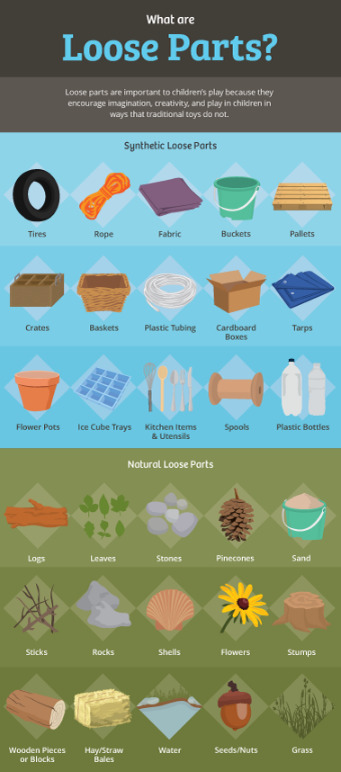
(Kashin, 2016).
Loose parts are open-ended materials that can be used in multiple ways. These things can be either synthetic or natural (Kashin, 2016). Loose parts can be any number of items that can be moved or rearranged. Open-ended materials allow children to direct their own play (Jode ECE, 2018). Children enjoy loose parts and materials because of their endless possibilities. Open-ended materials inspire children to create and experiment (Dietze & Kashin, 2017). Children are competent and capable learners, full of curiosities, questions and creativity. Providing children with a variety of loose parts allows children to practice and master a range of skills in multiple ways. Because loose parts can be used in pretty much what ever way children choose, loose parts provide less opportunities for children to become bored. Children use a range of skills when open-ended materials are added to their environment, or better yet, when found naturally in the outdoor environment. According to McKinley (2007), human beings are natural born collectors and therefore, children enjoy collecting things as well. Give children a basket or something they can hold/collect things in and then let them explore in a nature filled area. Children’s baskets will come back filled with a variety of things. Allowing children to do this will also allow educators to see what things made children interested or curious enough to pick up and add to their own collection.
Nature is filled with a large variety of natural loose parts that inspire children’s creativity. Loose parts also inspire adventure for children (Kashin, 2016). When provided with opportunities to explore nature, this also becomes part of the adventure for children. The loose parts found in nature allow children to build on a vast range of skills. The following pictures depict a few of the ways that children have used loose parts in their skill building. What can children learn with loose parts? The possibilities are endless.

Here children seem to be building something using natural loose-parts.
Picture found at https://encrypted-tbn0.gstatic.com/images?q=tbn:ANd9GcT7qLE4MEEkQuH3rIqqhQydjFsi48PdnuxsdOetaAwR6dHZBfiYiw

Here children creatively used natural and synthetic loose parts together.
Picture found at https://encrypted-tbn0.gstatic.com/images?q=tbn:ANd9GcTXwJg1PdhIkKiCq307oscy8hJ6bQV2B0-SkMgmfHVRY1OEyZXh

Here children are using loose parts as a sorting activity. Sorting teaches numeracy, language and critical thinking skills. Photo found at
https://encrypted-tbn0.gstatic.com/images?q=tbn:ANd9GcTvWJ2qKHE2LjXr1ZUwiROiInUfca13Z_4CWyw3mudweJ6o1s9-Og
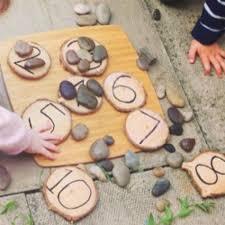
Here children are working on their numeracy skills, number matching by putting the corresponding amount of rocks on the number indicated on the tree cookies.
Photo found at https://encrypted-tbn0.gstatic.com/images?q=tbn:ANd9GcQZTZbOgirOaYdyr87VSFwP6EASsEI_8H21F1rodEnRt0A9DhGF
On a side note, infants, when given the choice will tend to choose a loose part or random item/material instead of a toy that was made specifically for infants. The following is a link to an interesting video that shows this behaviour.
youtube
(Story of This Life, 2018).
References
Dietze, B., & Kashin, D. (2017). Outdoor and nature play in early childhood education. North-York: Pearson Canada Inc.
Jode ECE. (2018). Using Open Ended Materials in Outdoor Play. Retrieved from The empowered educator: Inspiring ideas and resources for early learning: https://www.theempowerededucatoronline.com/2017/05/open-ended-play-materials-for-outdoors.html/?fbclid=IwAR1jcX7U9RRuAvQNK76ylPfer1rsJ-zEcuk_VNORM0s3i-ljHMHd1VJ2hRw
Kashin, D. (2016, October 8). Loose Parts Outside for Adventurous Play! Retrieved from Technology rich inquiry based research: https://tecribresearch.wordpress.com/2016/10/08/loose-parts-outside-for-adventurous-play/
McKinley, M. B. (2007, January 1). The psychology of collecting. Retrieved from National Psychologist: https://nationalpsychologist.com/2007/01/the-psychology-of-collecting/10904.html
Story of This Life. (2018, October 23). Baby Toys Vs Random Things. Retrieved from Youtube: https://www.youtube.com/watch?v=9FizCJdJDec
0 notes
Photo
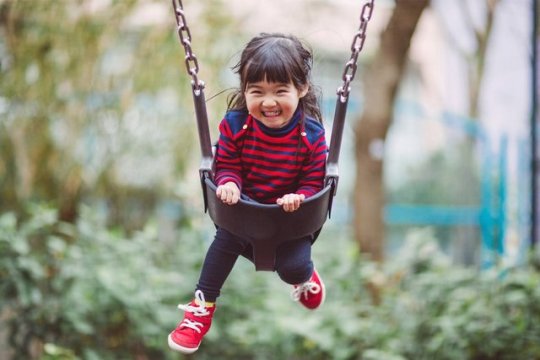
How is playing outdoors so beneficial? it allows them to explore their environment, develop muscle strength and coordination, and gain self-confidence. Playing actively outdoors also increases flexibility, fine and gross motor skills, and is related to the development of a wide variety of physical skills, including those involved in sports. -Alfano, 2018.
Alfano, K. (2018). The Benefits of Outdoor Play. Retrieved from https://www.fisher-price.com/en_US/parenting-articles/outdoor-play/the-benefits-of-outdoor-play
4 notes
·
View notes
Photo
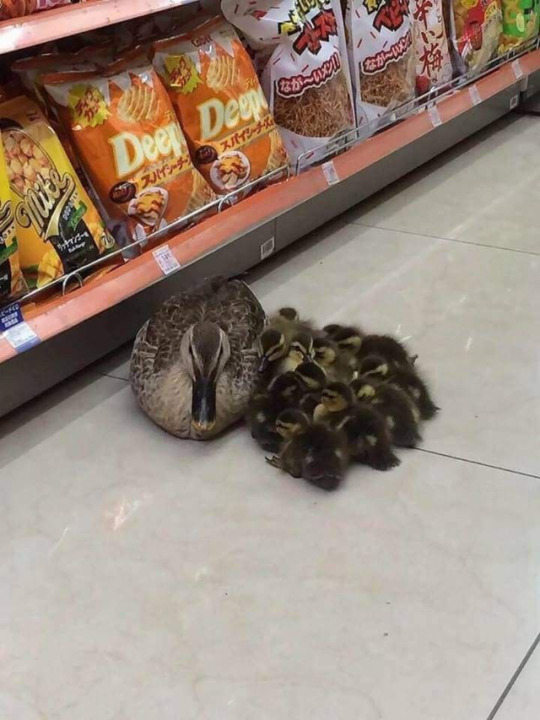
I think someone spilled a bag of ducks near aisle 6
4K notes
·
View notes
Photo
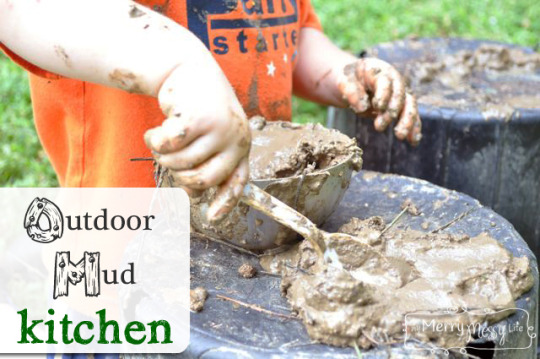

Let Them Eat Cake; Or How About Mud Pies!
Global News says new research finds that there is such a thing as too clean.
Playing outside can get messy, but when you are a child, getting messy is half of the fun. Children are sensory learners and exposure to the natural world, allows them to experience different textures - touch (mud, dirt, grass, fast running water vs slow running water), sights (the endless array of beauty that nature provides), smells (blooming flowers, the smell of the rain or the freshly cut grass) and tastes (eatable flowers, fresh fruits and vegetables etc.).
Playing outside and getting dirty used to be the norm for children. However, one article published in the Global News suggests that over the last century there has been an emphasis on hygiene, which in the past has saved lives, but now, this hygiene craze has had a harmful effect on children’s immune systems (Cain, 2016). This article states that the rising rates of children with asthma and allergies is due to the fact that children’s immune systems are not receiving enough exposure to the wide variety of microbes out there. Furthermore, the article suggests that children should not only, get dirty playing in the mud, but they should also eat it. That’s right you read correctly, the article states that when children are exposed to dirt and they eat it, they develop immunities and antibodies that they would not develop otherwise. They suggest that this kind of exposure is actually good for children’s health. The article goes on to explain that the human relationship with microbes is complex. Simply put the more exposure your immune system has to microbes, the more it knows – and the more it knows, the better it does (Cain, 2016). Moreover, the article stresses the importance of “good microbial exposure” to develop a strong immune system in the early years (Cain, 2016).
So why not go ahead and let your children play in the mud, get dirty and bake a few tasty mud pies.
If you are interested in reading this article you can find it at this site https://globalnews.ca/news/2913400/parents-should-let-their-kids-eat-dirt-here-are-the-reasons-why/amp/?__twitter_impression=true&fbclid=IwAR3l3tdznnJIw0xfhPwv47R4n2CJRvZ2tcuHbV2EQoBgJFHEBW5lh3UJJNM
References
Cain, P. (2016, September 3). Parents should let their kids eat dirt. Here are the reasons why. Retrieved from Global News: https://globalnews.ca/news/2913400/parents-should-let-their-kids-eat-dirt-here-are-the-reasons-why/amp/?__twitter_impression=true&fbclid=IwAR3l3tdznnJIw0xfhPwv47R4n2CJRvZ2tcuHbV2EQoBgJFHEBW5lh3UJJNM
0 notes
Text

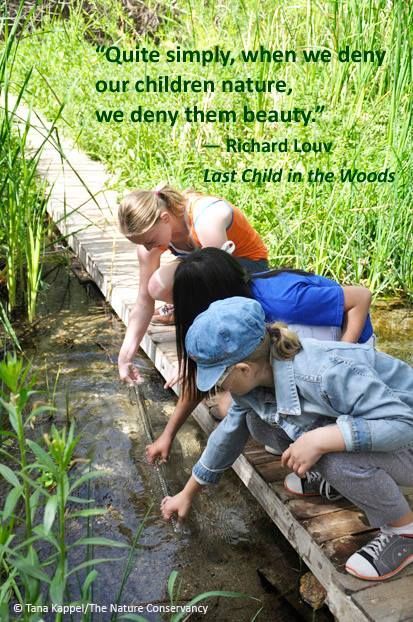
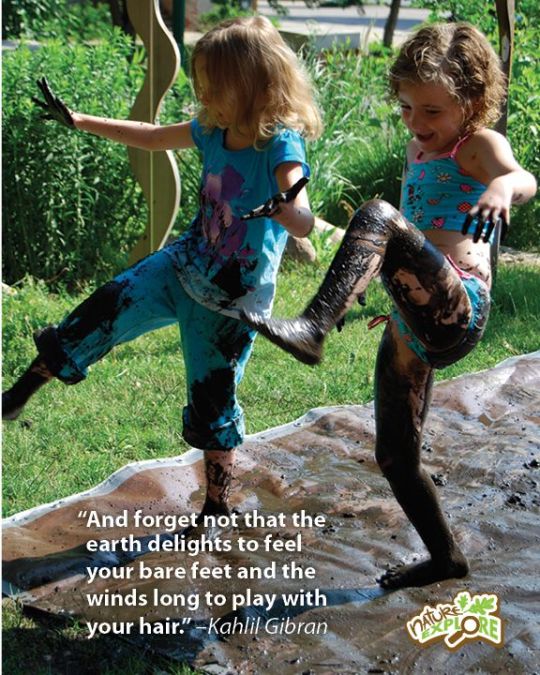
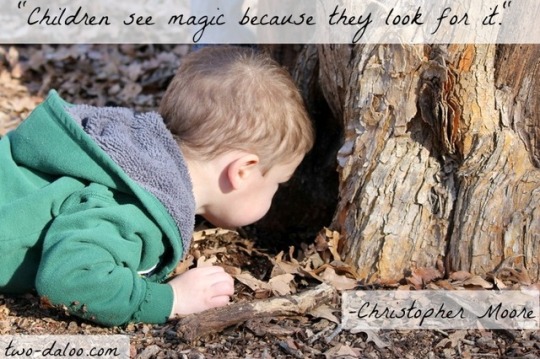
Children are competent and capable learners. Their curiosities are endless and nature provides inspiration that nurtures their curiosity and fosters critical thinking. In nature, children's learning is limitless and when children grow to develop a love and interest for nature, they will grow to care about the environment.
0 notes
Text
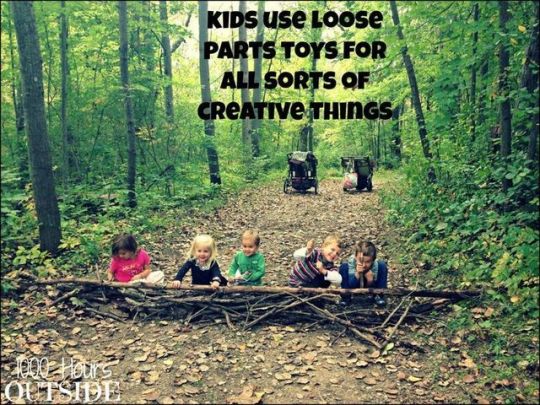
This picture is a wonderful, yet small example of what children are capable of when provided with the right environments and opportunities.
0 notes









